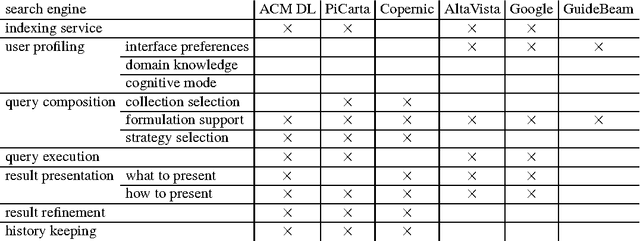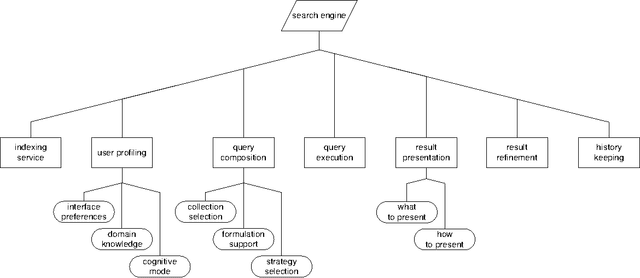A functionality taxonomy for document search engines
Paper and Code
May 27, 2021


In this paper a functionality taxonomy for document search engines is proposed. It can be used to assess the features of a search engine, to position search engines relative to each other, or to select which search engine 'fits' a certain situation. One is able to identify areas for improvement. During development, we were guided by the viewpoint of the user. We use the word `search engine' in the broadest sense possible, including library and web based (meta) search engines. The taxonomy distinguishes seven functionality areas: an indexing service, user profiling, query composition, query execution, result presentation, result refinement, and history keeping. Each of these relates and provides services to other functionality areas. It can be extended whenever necessary. To illustrate the validity of our taxonomy, it has been used for comparing various document search engines existing today (ACM Digital Library, PiCarta, Copernic, AltaVista, Google, and GuideBeam). It appears that the functionality aspects covered by our taxonomy can be used for describing these search engines.
 Add to Chrome
Add to Chrome Add to Firefox
Add to Firefox Add to Edge
Add to Edge